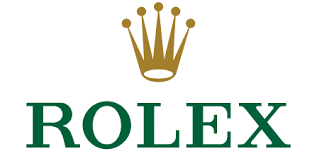Last Updated on: 22nd June 2024, 07:20 pm
5 Steps in Buying Stock
Step 1: Find a Broker That You Like
Choosing an online broker can be overwhelming due to the vast number of options available. To simplify your search, we’ve compiled a shortlist of recommended brokers from our partners. Keep in mind that GeeksBell.com is not an investment advisor and does not provide specific advice, brokerage services, or recommendations to buy or sell particular stocks or securities.
Learn more about the 10-Step Guide to Investing in Stocks in 2024
Step 2: Pick Your Stocks
After setting up and funding your brokerage account, it’s time to select your stocks. Start by researching companies you are already familiar with as a consumer. Don’t let the flood of data and real-time market fluctuations overwhelm you. Keep your investment goals simple and look for companies you would like to be part owner of.
A good starting point is the company’s annual report, particularly the management’s annual letter to shareholders. This letter offers valuable insights into the company’s current situation and provides context for the financial numbers. Additionally, your broker’s website will have essential information and tools for evaluating the business, including SEC filings, conference call transcripts, quarterly earnings updates, and recent news. Many brokers also offer guides and basic seminars on stock selection to help you navigate these tools.
Step 3: Decide How Many Shares to Buy
There’s no pressure to buy a certain number of shares or to fill your entire portfolio position in a stock all at once. Start small to get a feel for owning individual stocks and to see if you can handle the volatility without losing sleep. You can gradually add to your position over time as you become more confident in stock trading.
Step 4: Choose Your Order Type
Successful investors frequently use two main types of orders: market orders and limit orders.
Market Orders
With a market order, you’re indicating that you’ll buy or sell the stock at the best available current market price. Be aware that the price you pay or receive may not be the exact price quoted moments before, as bid and ask prices fluctuate constantly throughout the day. Market orders are best for buying stocks with stable prices, like large, steady blue-chip stocks, rather than smaller, more volatile ones.
Consider the following before placing a market order:
- Market orders are suitable for buy-and-hold investors who prioritize order fulfillment over small price differences.
- If you place a market order after trading hours, it will be executed at the prevailing price when the market next opens.
- Check your broker’s trade execution disclaimer, as some low-cost brokers bundle all customer trade requests to execute simultaneously at the prevailing price.
Limit Orders
A limit order allows you to control the price at which your trade is executed. For example, if ABC stock is trading at $90 per share, but you prefer to buy it at $90, your limit order instructs your broker to wait until the price drops to $90. On the selling side, a limit order will sell the shares once the bid price reaches your specified level.
Limit orders are useful for buying and selling stocks with wider price spreads or during short-term market volatility. They are also beneficial when the stock price is more important than order fulfillment. You can set additional conditions on a limit order, such as:
- “All or None” (AON) orders, which execute only if all the shares can be traded at your limit price.
- “Good for Day” (GFD) orders, which expire at the end of the trading day.
- “Good Till Canceled” (GTC) orders, which remain in effect until you cancel them or they expire.
Keep in mind:
- Limit orders guarantee the price but not the execution of the trade.
- They may incur higher commissions if partially filled over multiple days.
- Unfulfilled limit orders will not be executed if the stock never reaches your specified price.
Step 5: Learn the Lingo
Familiarize yourself with essential stock trading terms:
- Ask (for buyers): The price sellers are willing to accept for the stock.
- Bid (for sellers): The price buyers are willing to pay for the stock.
- Spread: The difference between the highest bid price and the lowest ask price.
- Market order: A request to buy or sell a stock at the best available price.
- Limit order: A request to buy or sell a stock only at a specific price or better.
- Stop (or stop-loss) order: A market order executed once a stock reaches a certain price.
- Stop-limit order: When the stop price is reached, the trade becomes a limit order.
Final Step: Start Buying Stocks
You’re now ready to invest! To begin, choose a broker from our recommended list and start building your portfolio.










